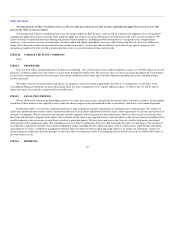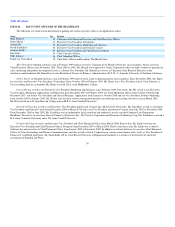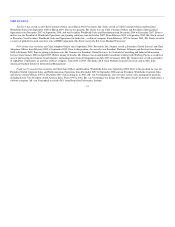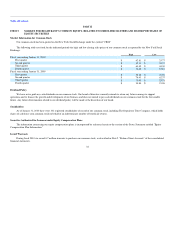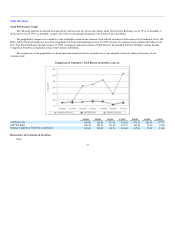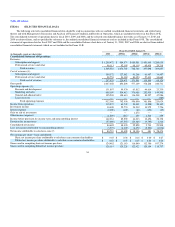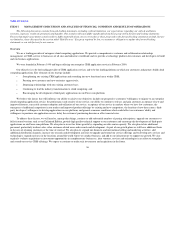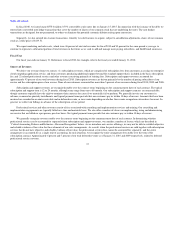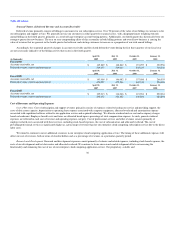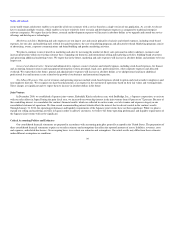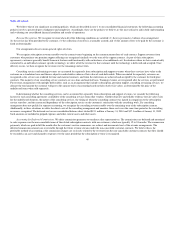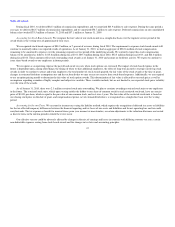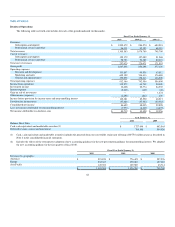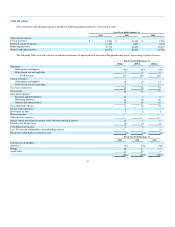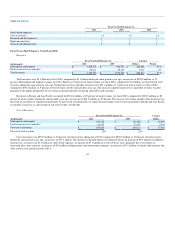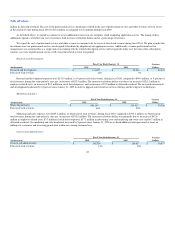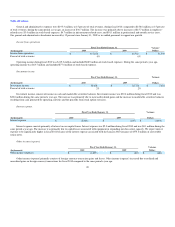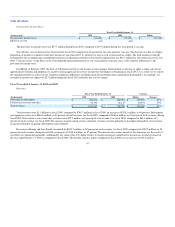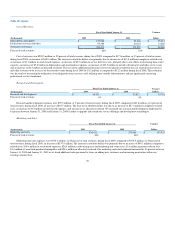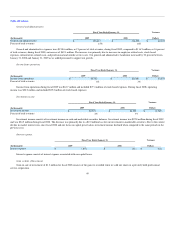Salesforce.com 2009 Annual Report Download - page 42
Download and view the complete annual report
Please find page 42 of the 2009 Salesforce.com annual report below. You can navigate through the pages in the report by either clicking on the pages listed below, or by using the keyword search tool below to find specific information within the annual report.
Table of Contents
secure multi-tenant architecture enables us to provide all of our customers with a service based on a single version of our application. As a result, we do not
have to maintain multiple versions, which enables us to have relatively lower research and development expenses as compared to traditional enterprise
software companies. We expect that in the future, research and development expenses will increase in absolute dollars as we upgrade and extend our service
offerings and develop new technologies.
Marketing and Sales. Marketing and sales expenses are our largest cost and consist primarily of salaries and related expenses, including stock-based
expenses, for our sales and marketing staff, referral fees paid to partners, the cost of marketing programs and allocated overhead. Marketing programs consist
of advertising, events, corporate communications and brand building and product marketing activities.
We plan to continue to invest heavily in marketing and sales by increasing the number of direct sales personnel in order to add new customers and
increase penetration within our existing customer base, expanding our domestic and international selling and marketing activities, building brand awareness
and sponsoring additional marketing events. We expect that in the future, marketing and sales expenses will increase in absolute dollars and continue to be our
largest cost.
General and Administrative. General and administrative expenses consist of salaries and related expenses, including stock-based expenses, for finance
and accounting, human resources and management information systems personnel, legal costs, professional fees, other corporate expenses and allocated
overhead. We expect that in the future, general and administrative expenses will increase in absolute dollars as we add personnel and incur additional
professional fees and insurance costs related to the growth of our business and international expansion.
Stock-Based Expenses. Our cost of revenues and operating expenses include stock-based expenses related to option and stock awards to employees and
non-employee directors. We recognize our share-based payments as an expense in the statement of operations based on their fair values and vesting periods.
These charges are significant and we expect them to increase in absolute dollars in the future.
Joint Venture
In December 2000, we established a Japanese joint venture, Kabushiki Kaisha salesforce.com, with SunBridge, Inc., a Japanese corporation, to assist us
with our sales efforts in Japan. During the prior fiscal year, we increased our ownership interest in the joint venture from 65 percent to 72 percent. Because of
this controlling interest, we consolidate the venture's financial results, which are reflected in each revenue, cost of revenues and expense category in our
consolidated statement of operations. We then record a noncontrolling interest which reflects the interest that we do not control in the venture's results.
Through January 31, 2010, the operating performance and liquidity requirements of the Japanese joint venture have not been significant. While we plan to
expand our selling and marketing activities in Japan in order to add new customers, we believe the future operating performance and liquidity requirements of
the Japanese joint venture will not be significant.
Critical Accounting Policies and Estimates
Our consolidated financial statements are prepared in accordance with accounting principles generally accepted in the United States. The preparation of
these consolidated financial statements requires us to make estimates and assumptions that affect the reported amounts of assets, liabilities, revenues, costs
and expenses, and related disclosures. On an ongoing basis, we evaluate our estimates and assumptions. Our actual results may differ from these estimates
under different assumptions or conditions.
39


